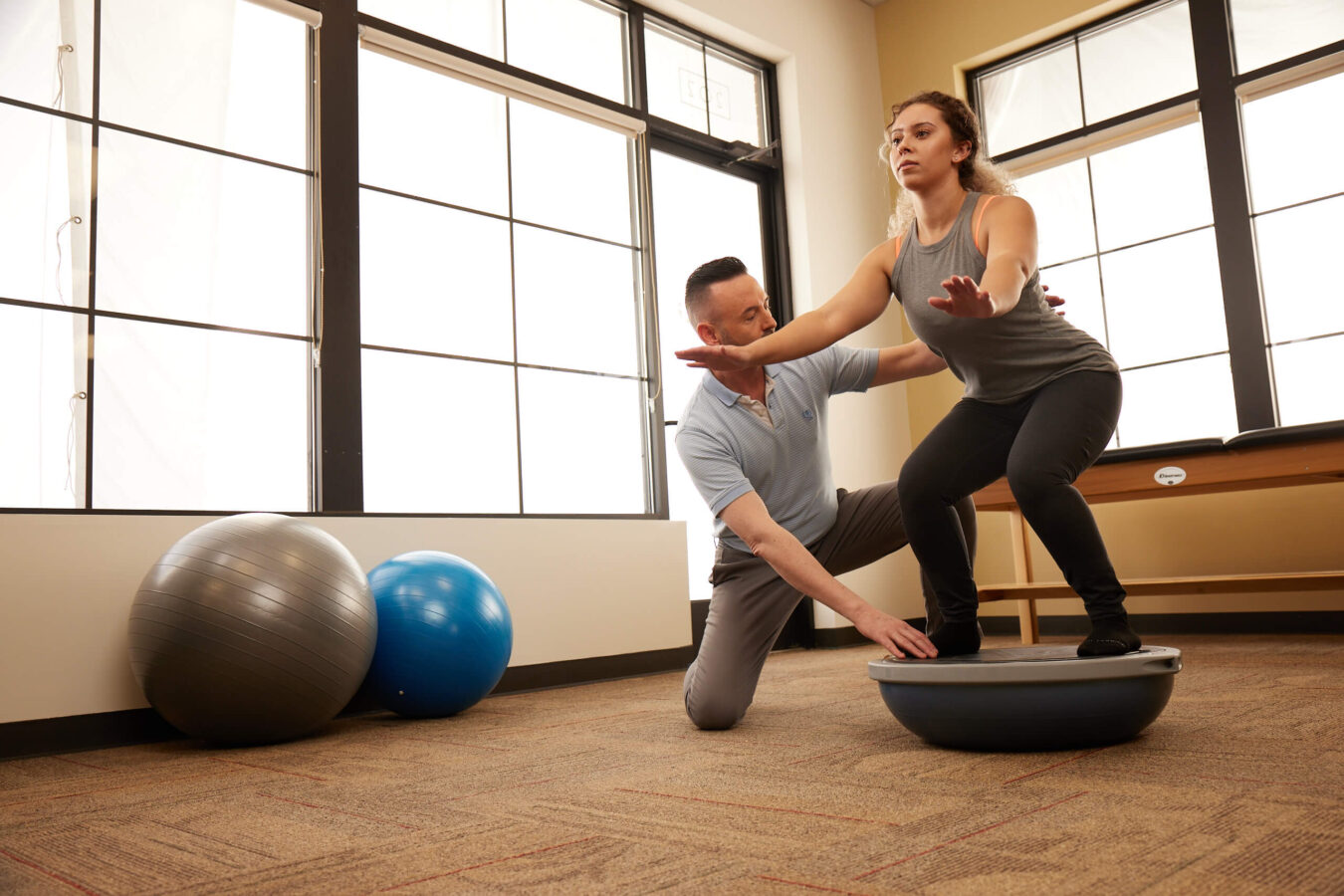
Medically reviewed by Misty Seidenburg
Engaging in sports is not just about physical fitness; it’s a journey of self-improvement and mental well-being. However, sports can sometimes lead to injuries, which can be a frustrating and painful setback. While we can’t prevent every accident, we can take certain precautions to minimize the risk of sports injuries.
Sports physical therapy is not just a post-injury solution; it’s a proactive measure to prevent injuries. It’s a tool that benefits everyone, from elite competitive athletes to weekend warriors, by preparing their bodies for the physical demands of their activities. Moreover, it aids in the safe and effective recovery from injuries, ensuring athletes can return to their game once treatment is complete.
Physical therapists can complete additional education and training to become board-certified in sports physical therapy or complete other certifications in the field of sports. Sports therapy, or sports rehab, is a specialized area of physical therapy focusing on the continuum of care for athletes, from prevention and performance to treating acute, chronic, and repetitive musculoskeletal injuries commonly affecting athletes.
It involves a comprehensive approach to helping athletes feel, move, and perform at their best through prevention, treatment, rehabilitation, and education. A sports therapy program benefits individuals of all ages and abilities who play individual, team, and competitive sports, from school-age kids to college and professional athletes.
Sports injuries generally fall into two categories: traumatic injuries and overuse injuries. A traumatic injury occurs when there is a forceful impact on the body. It happens when two athletes collide or when an athlete collides with an object or the ground.
Specific movements can also cause trauma to the body. If the body twists, pivots, cuts, lands, or over-strides quickly, unnaturally, or forcefully, these motions can damage muscle, ligament, or tendon. Common traumatic sports injuries include sprains, strains, fractures, joint dislocations, groin pulls, and head, back, and knee injuries.
During physical activity, the body’s muscles and tendons experience micro-tears that heal and strengthen with rest. But athletes who overtrain without rest don’t allow their bodies to recover. Overuse injuries develop when tissue in a specific body part becomes damaged due to repetitive demand over a prolonged period.
Around 42% of individual sports injuries and 33% of team sports injuries happen from overuse.
Common overuse sports injuries include tendinopathy, tennis elbow, golfer’s elbow, stress fractures, and shoulder impingement.
Every athlete can benefit from sports rehab, whether they are determined to land a spot on the college roster—or step up their pickleball game.
These are just some of the ways sports rehab builds better athletes:
Believe it or not, sports rehab can also be a relaxing experience! Hands-on manual therapy and other modalities relieve sore muscles and help athletes slow down and destress.
Let’s look at how sports physical therapists help athletes recover from injuries and prevent recurrence.
Sports rehab aims to help athletes restore strength, function, and mobility after an injury. Physical therapists address pain and impairments related to the injury and focus on promoting healing to help the athletes return to their pre-injury active and performance levels.
After a sports injury, physical therapists evaluate any impairments the athlete is experiencing. These can include reduced joint stability, muscle weakness, and limited range of motion.
Treatment involves targeted therapies and interventions to improve in these areas. Therapeutic exercise and stretching, manual therapies for tissue recovery, and pain management strategies are often a part of sports therapy.
Sports rehab is part of every step in the healing process. It starts in the early phases after a sports injury when pain and swelling reduction are priorities. From there, physical therapists work to build strength and improve motion while gradually increasing activity as the athlete progresses.
Sports rehab for injury prevention and rehabilitation includes a wide range of services for all types of athletes, including:
To help athletes perform better and prevent and rebound from injuries, physical therapists combine various techniques and therapies:
Every sports rehab treatment plan is individualized based on the athlete’s sport, the part of the body affected, and their performance goals. These plans are reviewed and updated as the athlete improves or their needs change.
Next, we’ll explore how sports physical therapy helps reduce the risk of sports injuries.
Injury prevention with sports rehab identifies and addresses imbalances and risk factors that increase the risk of injuries. The goal is to enhance the athlete’s physical condition and optimize movement patterns to lower the risk of getting hurt.
An injury prevention program begins with an initial evaluation to assess the athlete’s physical condition, strength, flexibility, biomechanics, and movement patterns. During this comprehensive assessment, the sports therapist identifies possible imbalances or weaknesses that may predispose the athlete to injury.
Sports injury prevention involves warm-up exercises, dynamic stretches, static stretches, and education on practical ways to reduce the risk of injury. Therapists educate athletes on using proper technique, taking time to rest, allowing injuries to fully heal, and wearing well-fitting safety equipment for the sport they play.
Sports therapy for injury prevention is part of a proactive training program that occurs all year round: in pre-season, during the season, and in the off-season. Find a physical therapy clinic near you or request an appointment online to learn how you can benefit from a sports rehab program to reduce or recover from injuries.
External Sources: